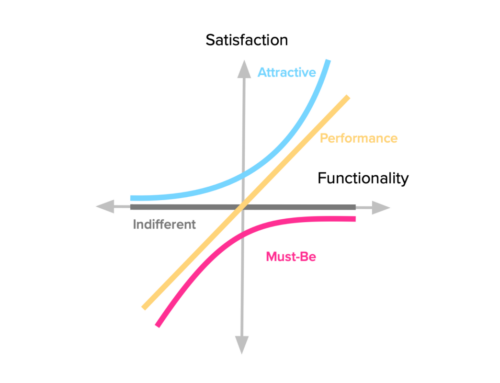
There are 2 ways to approach understanding user behaviors when utilizing user research – Attitudinal UX Research and Behavioral UX Research. Both methods provide unique user insights, but they adopt distinct methodologies and have different strengths.
Attitudinal UX Research – What users say
Understanding the Concept:
Attitudinal UX Research focuses on exploring what users’ say or understanding the “why” in what they are doing: attitudes, opinions, and beliefs regarding a product or service. This typically involves gathering qualitative data through interviews, surveys or focus groups. Researchers are trying to comprehend their emotional responses, perceptions and overall satisfaction with the product.
The Power of Empathy:
Empathy lies at the heart of attitudinal UX research. By placing themselves in the users’ shoes, researchers can identify pain points, unmet needs and desires, which may not be apparent through conventional behavioral data. This approach helps to build a comprehensive understanding of users’ motivations, allowing designers to create empathetic and emotionally resonant experiences.
Behavioral UX Research – What users do
Unleashing the Power of Observation:
Behavioral UX Research focuses on what the user does – observing and analyzing users’ actual interactions and behaviors while engaging with a product or service. This method relies on collecting quantitative data, such as clicks, navigation patterns, session duration, and user flow. The goal is to gain objective insights into user behavior, which helps identify usability issues and areas of improvement.
Iterative Design:
Behavioral UX Research is a fundamental component of iterative design. By closely observing user interactions, designers can make data-driven decisions and refine their products iteratively. This approach encourages constant improvement, ultimately leading to a more intuitive and seamless user experience.
Combining Attitudinal and Behavioral Research
The Comprehensive Approach:
By triangulating data from both Attitudinal & Behavioral methods, researchers can form a holistic understanding of the user experience. This approach allows for a more comprehensive view of users’ attitudes and actions, enabling designers to create products that align perfectly with user expectations.
Identifying Discrepancies:
When Attitudinal and Behavioral data are combined, it signals discrepancies between what users say they want and what they actually do. These discrepancies provide critical cues to UX designers, highlighting areas of potential improvement. For instance, users may express a strong desire for a certain feature, but the data shows that they rarely use it. Identifying such disparities helps prioritize design decisions and aligns the product more closely with users’ true needs.
Balancing Qualitative and Quantitative Insights
To conduct effective UX research, it is essential to strike a balance between Attitudinal and Behavioral methods. Qualitative insights offer a deep understanding of users’ motivations, while quantitative data provides actionable metrics for measuring success and gauging improvement.
Iterative and User-Centric Design:
Iterative design, backed by a combination of Attitudinal and Behavioral UX Research, forms the base of user-centric design. Regularly collecting and analyzing user feedback ensures that the product evolves with the users’ changing needs and preferences. So don’t think attitudinal vs behavioral research, get creative with how you can combine methods or tactics to get the best feedback of how your target user uses your product.










